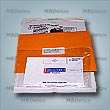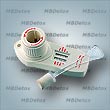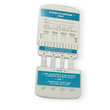-
November 17th, 2010
Dot Drug Testing
Related products:
-

Home Hair Test Kit
Get fast results in the privacy of your home with our Home Hair Drug Testing Kit. Simple and discrete, …
Buy now
$69.99 -

Saliva 6 Multi Drug Test Kit (COC/mAMP/PCP/THC/OPI/AMP)
The 6Multi Drug Test Kit provides instant results for 7 drugs of abuse as listed by the Substance Abuse …
Buy now
$29.99 -

Multi-panel THC/Marijuana Home Urine Test Kit
The multi-panel THC home drug test is for the individual that wants to test their toxin level in the …
Buy now
$19.99
DOT Drug Testing.
The Department of Transportation was established in 1966 by an act of Congress and the DOT started working in April 1967. The mission of the department is to “serve the United States by ensuring a fast, safe, efficient, accessible and convenient transportation system that meets our vital national interests and enhances the quality of life of the American people, today, and into the future”. Rules and procedures are established by the DOT for Drug testing of a wide spectrum of drivers.
Drug and Alcohol Testing is essential for preventing drug and alcohol abuse. When drugs and alcohol is consumed by drivers of automobiles there can be accidents. The drunk or the drug user driver not only puts his own life in danger, he also endangers the life and limb of his fellow passengers and others on the road, on the rails and in the air. The piss test that is so popular in all the other arenas where drug test is conducted is not so widely used in this field. The blood and saliva test are usually used. Both these tests can reveal the presence of drugs and alcohol consumed within a short period before the test is actually conducted. These tests are also difficult to cheat – you cannot have anybody else’s saliva and blood in your mouth and veins.
There is a legislative sanction for this testing. The Omnibus Transportation Employee Testing Act of 1991 makes drug and alcohol testing compulsory for many safety – sensitive transportation employees. The list includes such employees in the aviation, railroad, mass transit, trucking, pipeline and other transportation industries. The DOT publishes detailed rules and regulations on all aspects of drug and alcohol testing. These rules include who should conduct the tests, how the tests should be conducted and what procedures are to be used during testing. The said rules are applicable to almost 10 million people that include all transportation employers, safety sensitive transportation employees and service agents. The Office of Drug and Alcohol Policy and Compliance (ODAPC) is encompassed in the 49 Code of Federal Regulations (CFR) Part 40 and it publishes, implements and provides authoritative interpretation of all these rules.
-
Need to pass a drug test ? That's the best website
Face your Drug Test with Confidence
24/7 toll free call line (866) 600-0032
Did not find the information you need? Search the similar articles: